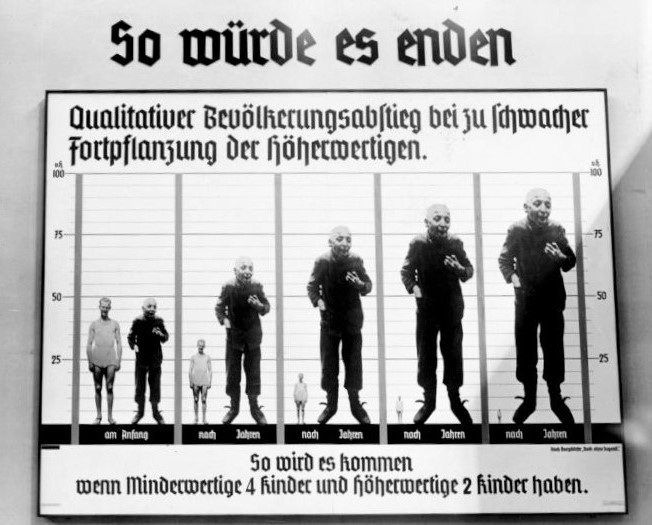
Source: German Federal Archives (Bild 102-16748 ) via Wikimedia Commons
The systematic killing of children deemed “mentally defective” (Kinder-Euthanasie) was begun in 1939 under the code name T-4 to hide its purpose, which was to restore the genetic purity of the German people. Children that had been certified as mentally ill, schizophrenic, or incapable of murder were either killed by lethal injection or gassed to death. Children who met this classification were removed from the facility they were in and taken to one of six centers for “disinfection.” Both Jewish and non-Jewish children were targets of this program. The successful implementation of this plan led to its expansion to adults who met the same classification as well.
Starting on 21 May 1940, Aktion T-4 had mentally ill patients in East Prussia transferred to Soldau concentration camp. There they would be killed by an SS unit under the command of Herbert Lange, who was paid 10 Reichsmarks for each person killed. However, since many of the patients were deported without notice to their legal guardians, this caused unexpected legal issues to arise. The death certificates that were eventually issued were ambiguous as to the cause of death often citing a contagious disease. This raised suspicion that something was going on (the same issue would also arise around the deaths of children killed already under this program). The Nazi’s tried covering their tracks by making it hard for the guardians and their doctors from tracking the movements of their patients or wards by transporting them first to transit centers and then later to an extermination camp (or done at the transit center).
The uproar that resulted from this not-so-secret extermination of children and adult mentally ill patients would force Hitler to suspend and then cancel the program in August 1941.
Sources
Euthanasia Program and Aktion T4. encyclopedia.ushmm.org/content/en/article/euthanasia-program.
—. “Hitler Suspends Euthanasia Program.” HISTORY, 14 Aug. 2019, www.history.com/this-day-in-history/hitler-suspends-euthanasia-program.
—. “Nazis Begin Killing ‘Unfit’ People in East Prussia.” HISTORY, 19 May 2020, www.history.com/this-day-in-history/nazis-kill-unfit-people-in-east-prussia.
Lutz Kaelber (Author): Kinderfachabteilungen (“Special Children’s Wards”): Sites of Nazi “Children’s ‘Euthanasia’” Crimes and Their Commemoration. www.uvm.edu/~lkaelber/children.
—. “Child Euthanasia in Nazi Germany.” Wikipedia, 22 Jan. 2024, en.wikipedia.org/wiki/Child_euthanasia_in_Nazi_Germany.
Snyder, Louis Leo. Encyclopedia of the Third Reich. 1976.

